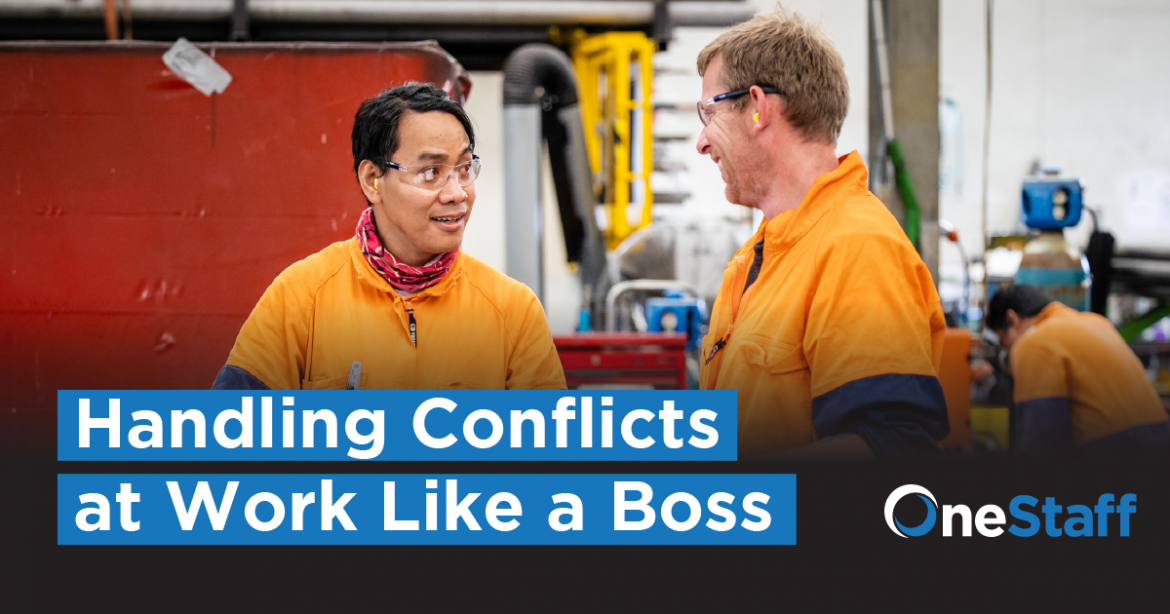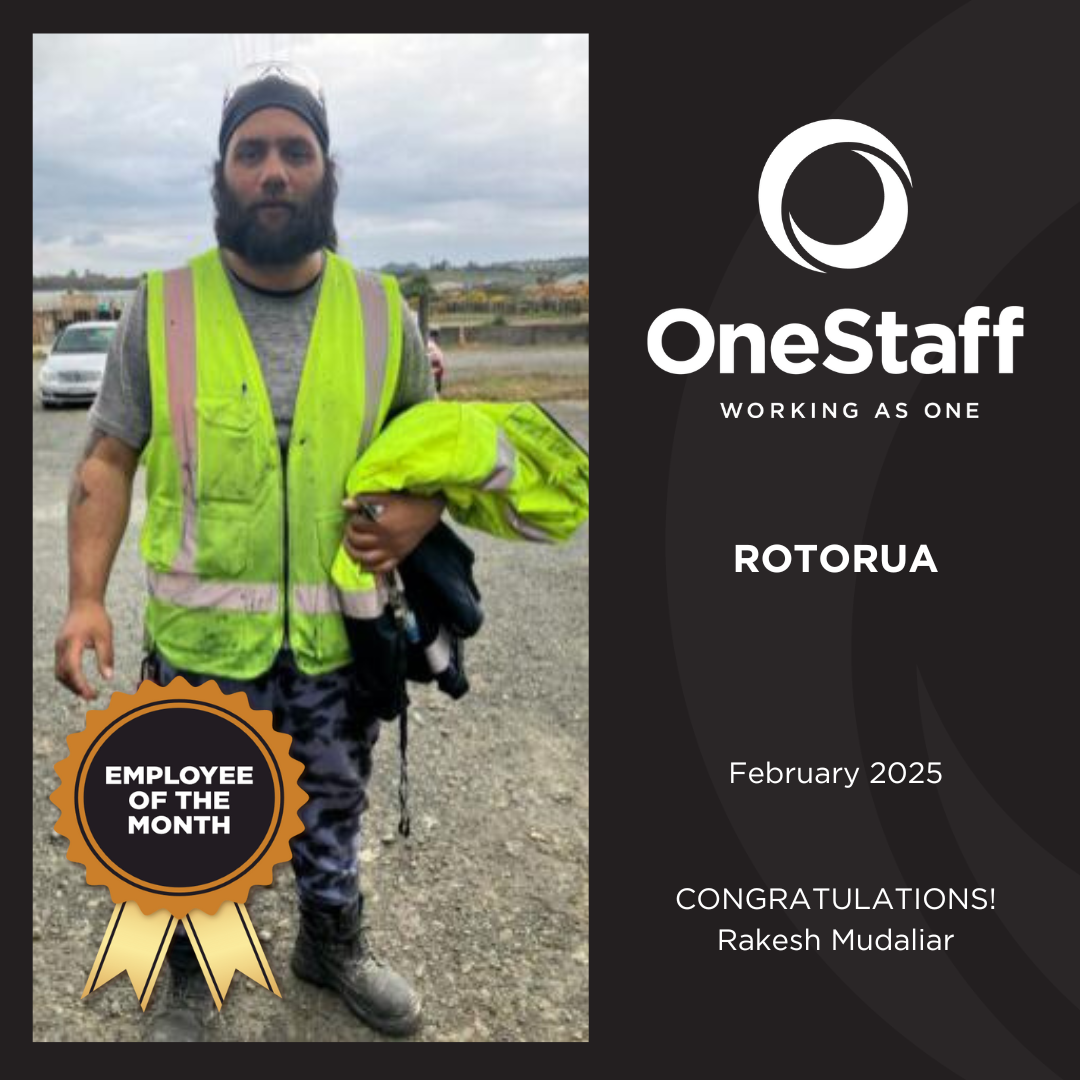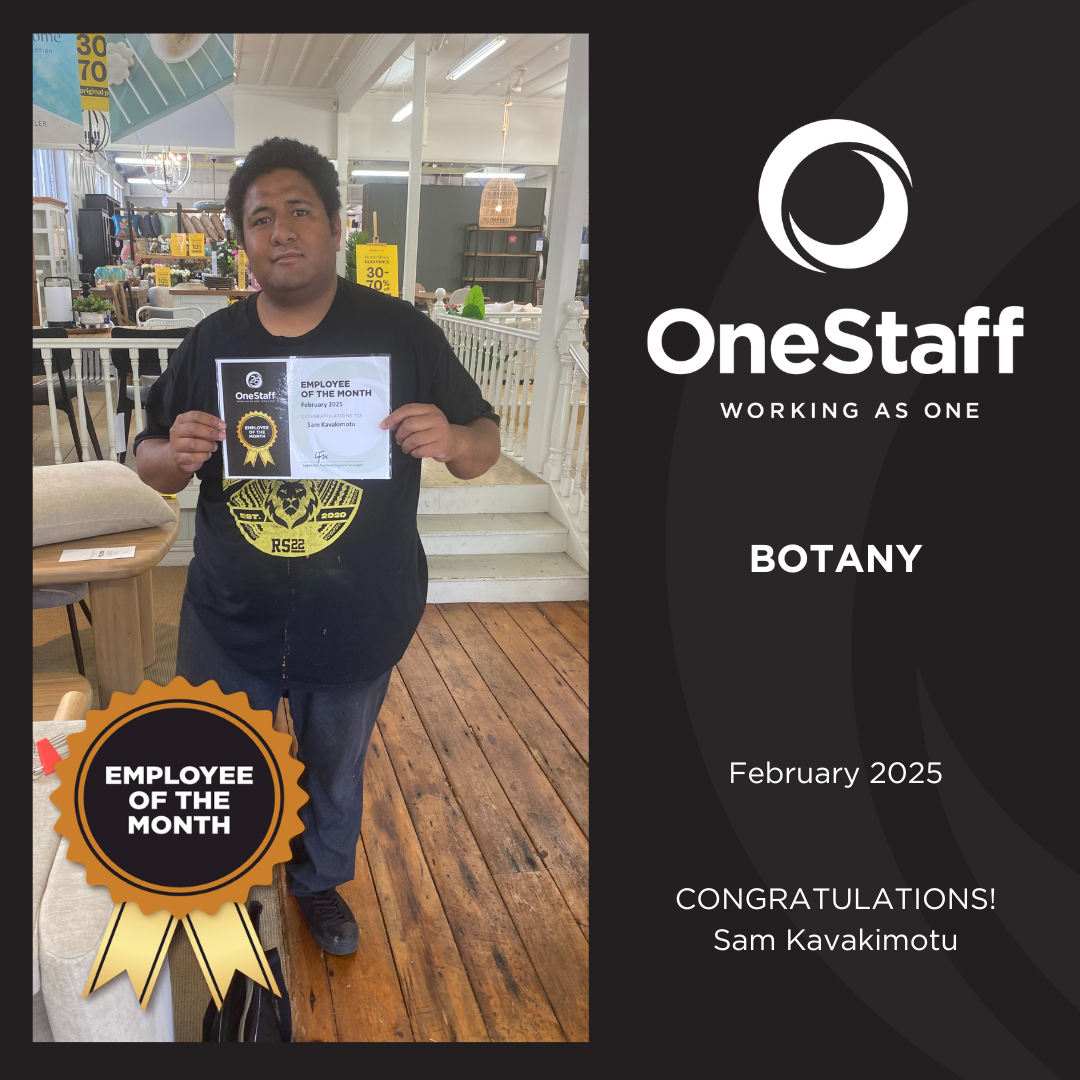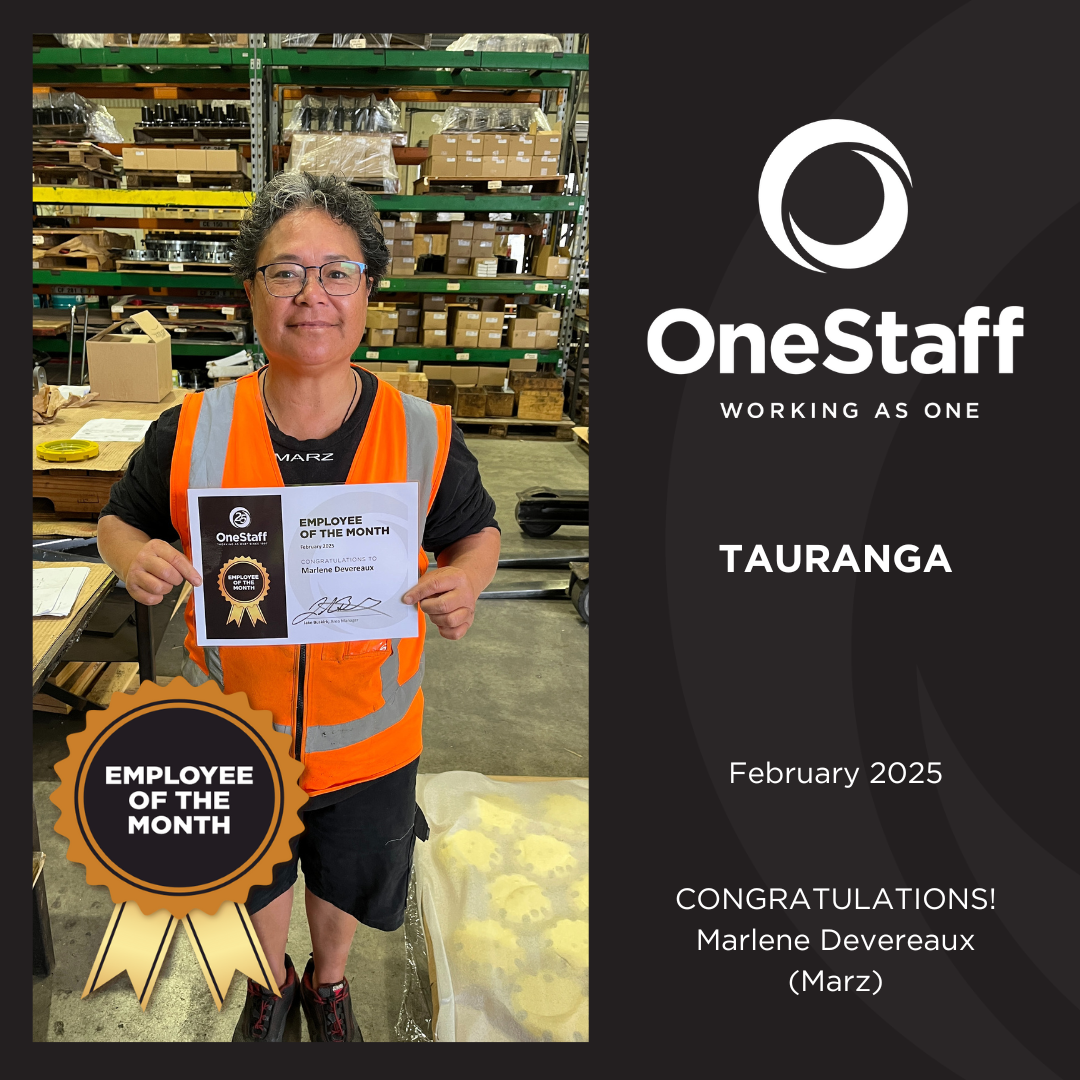Handling Conflicts at Work Like a Boss
7 mins read

As a manager on-site or in the office, handling conflicts at work is the least fun aspect of your job, but an extremely important one. Conflict at work is inevitable – we’ve all experienced it!
Whether it’s a mild disagreement, silent treatment or a few spicy interactions between team members, or something even more serious, it’s vital that conflict is sensibly handled before it escalates. In fact, many conflicts on construction projects and work sites can be de-escalated quickly if you know what warning signs to look for and what action to take.
We’ll outline key tips for conflict resolution at work and how to help create a harmonious environment where people can deal with conflicts like adults.
Recognise the Signs of Conflict
For managers, knowing how to spot the early warning signs of a workplace conflict is an important leadership skill. When conflicts are caught early, they are often easier to manage. Minor misunderstandings or differences of opinion can be resolved with a simple conversation, preventing small hills from growing into mountains.
Here are the signs to look for that indicate a potential or actual conflict at hand:
Emotional responses – Pay attention to your emotions expressed in the workplace. Are there feelings of frustration, anger, or defensiveness? Clues like the tone of someone’s voice can reveal quite a bit about their emotional state, even if their words don’t match.
Changes in communication – Has communication between you or colleagues become strained, confrontational, or passive-aggressive? Is someone using sarcasm, rolling their eyes or showing closed-off body language to indicate they’re unhappy with you or a colleague?
Behavioural changes – Notice if anyone is avoiding interaction, showing signs of disengagement, or exhibiting behaviours that are unusual or seem out of character.
Keep in mind that team members may expect you to step in and mediate when a conflict arises, as they might be uncomfortable trying to address the problem on their own. Being able to notice warning signs early will demonstrate you’re attentive to the needs of your team, which is a big factor in building team morale and trust.
Identify & Address the Causes
Conflicts between team members always have a root cause. If you can’t identify what is causing the issue, conflict resolution at work is impossible! Work conflicts often fall into one of these categories:
1) Task-related – These arise over the work itself, usually as differences in opinions on how tasks should be completed, deadlines, or expectations. Questions to ask:
- Are we disagreeing on the goals of a task, how to do it, or both?
- Is there a lack of clarity around roles or responsibilities? Is there confusion about authority, decision-making, or reporting lines?
Address the problem: Ensure that each team member understands their responsibilities and the goals of the task. Give all team members involved the opportunity to discuss their viewpoint. Determine if the issue is arising from a gap in training, so you can take steps to equip people with the skills and knowledge they need.
2) Interpersonal – Personality clashes or differences in working styles are a major source of interpersonal conflict. Consider:
- Is this issue more about how colleagues work together rather than the work itself?
- Are there underlying personal tensions or misunderstandings?
Address the problem: Act as a neutral third party to help the individuals involved have a constructive conversation, ensuring that each person feels heard and understood. You might need to reinforce the behavioural expectations for employees and the importance of professionalism and respect within the team. Make it clear that personal conflicts should not interfere with the workplace and set guidelines for respectful communication.
3) Values-based – Disputes can arise from differing beliefs, values, or ethics. Reflect on:
- Does this conflict stem from differences in personal or cultural values?
- Are there ethical concerns at play?
Address the problem: Acknowledge that team members may have different values or beliefs, especially in culturally diverse teams. Emphasise the importance of respecting these differences and finding common ground. If the conflict involves discrimination, take steps to address the issue in line with your company’s HR policy and New Zealand workplace laws.
4) Resource-based – Sometimes, company resources – such as time, money, or support – are limited, which can spur competition for resources (like free coffee in the break room). Ask yourself:
- Is this conflict about the allocation of resources?
- Are there perceived inequalities or unfair distributions?
Address the problem: When resources are limited, help the team prioritise tasks or share equipment or other materials fairly. Sometimes, simply ensuring that everyone has what they need can resolve the conflict. Make sure this process is transparent so that everyone understands the rationale behind decisions.
Be On Your Best Behaviour
As a manager, handling conflicts at work is inevitable – but it doesn’t mean you have to stoop to anyone else’s level or drop your professional standards, especially in the heat of the moment. Managers who stay accountable, mediate between team members effectively and take ownership of outcomes are role models for good leadership.
Effectively leading conflict resolution at work means not taking sides or playing the blame and shame game. If you need to call out bad behaviour, address it privately with the individuals involved first. Whatever you do, avoid spreading gossip and turning a conflict into a source of entertainment – this can seriously come back to haunt you!
Know When to Compromise or Walk Away
If you’re directly involved in a conflict at work, consider what you gain or lose by engaging in negative behaviour.
The issue might not be worth arguing over, especially if the other party can’t be swayed by facts or logic. In some cases, it might be more sensible to just walk away from arguments.
In some conflicts, both parties to a conflict could be right about something – the key is to meet them in the middle, which may require a bit of compromise on a manager’s part. Aside from non-negotiable factors like safety regulations, look for avenues to resolve the conflict by offering something of benefit to each party.
Outline the Next Steps
Resolving conflicts doesn’t always result in the best possible result for each party involved. However, once a resolution is decided on, make sure everyone involved understands the outcome and what is expected of them. Even if the parties involved aren’t happy about the outcome, it’s important to establish their long-term acceptance and cooperation.
Quality Construction Recruitment Can Reduce Conflict Risks
A team that works well together is more productive, safer and more efficient. With effective management strategies for handling conflicts at work, you can help your business avoid wasting valuable time and resources.
To keep conflicts to a minimum, hiring people with the right attitudes within your team will promote cooperation and respect. During the recruitment process, remember to focus on candidates’ mindset, not just their technical skills. This will help set the foundation for a harmonious (and high-performing) work environment.
That’s where OneStaff can help. For expertise and advice on hiring construction, manufacturing or industrial professionals, our team of recruitment specialists is a phone call away. To connect with our construction recruitment team or for labour hire support, get in touch with us today.
Hear the latest news from us
Aenean est, ipsum, aenean egestas porttitor massa scelerisque quam non. Eu odio sed id non. aenean egestas porttitor massa. Senean egestas porttitor massa scelerisque quam non.































